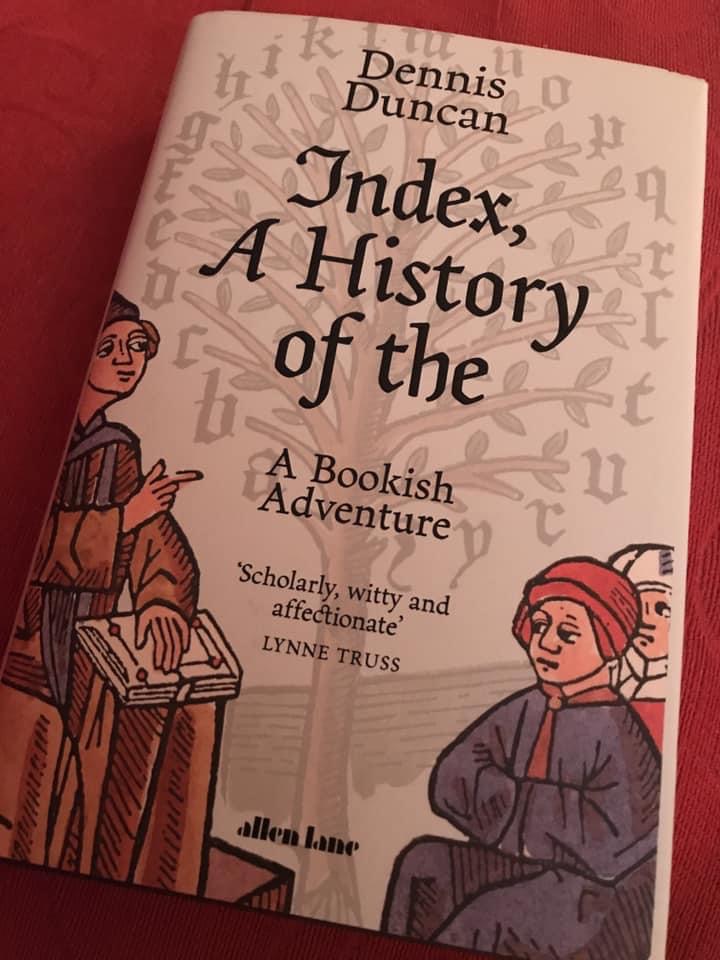I recently read this new book, exploring the history of book indexes over time. This obviously appealed to me as a book historian and bibliophile. But especially so because a couple of decades ago I retrained as a book indexer, qualifying with the Society of Indexers in the UK. I hoped that it would be work I could manage alongside my progressive neurological illness. Sadly after qualifying I found I was already too ill to work reliably as an indexer. But I maintain a great interest in and appreciation for the form.
The book ranges broadly and deeply over what is very much an abstract concept, often difficult to grasp in some of its more theoretical elements. Yet the book explains these well. I particularly enjoyed the early sections on the medieval origins of the index, and the different approaches of the distinctiones (more subject based indexes) and concordances (more like modern web search indexes), and how these ultimately merged in a way to create the modern book index.
As a book historian the discussion of the transition into the printed book era was fascinating, including the establishment of page numbers. I hadn’t known of the practical difficulties early printers faced trying to print these. The book here included helpful illustrations to show how early books were printed and numbered. Indeed the whole book was illustrated well throughout, often showing example indexes from printed books.
Another highlight section for me was the chapter looking at the especially eighteenth century phenomenon of mock book indexes. Despite in my academic historian guise being an eighteenth-century specialist as well as an historian of reading I was quite unaware of these published works. I appreciated how soundly the discussion of the battles conducted to and fro through published indexes was grounded in the world of eighteenth-century publishing.
Moving closer to the present day the book looks at the establishment of indexing societies in the nineteenth century and some of their loftier goals. Surprisingly comparable to a modern Google-type search index, but rather something that was aimed to be built through the medium of traditional subject indexes. Indeed the role of printed book indexes alongside Internet-type search engines in the present day is a topic that the book returned to time and again.
I was most pleased to see the final chapter of the book cover in depth the working methods of modern professional book indexers. So often people assume that this work can now be done automatically by computer. But to produce a good and effective subject index still requires a human book indexer. This was further demonstrated by the book including part of an index to itself that had been generated by automated computer software. The limitations of the resulting index were clear, especially when viewed alongside the also included subject index compiled by a modern professional – and human! – book historian.
Overall this is a thoroughly enjoyable work, and an example of exemplary scholarship. Recommended of course to any bibliophile or book historian, or indeed to anyone who has found a book index helpful in the past and wants to know more. Thank you Dennis Duncan.

